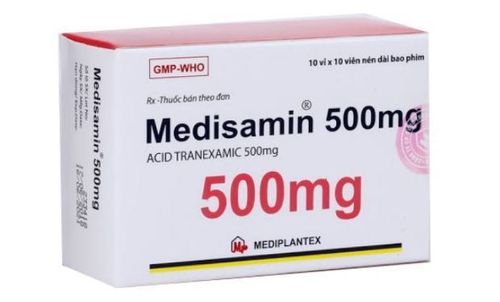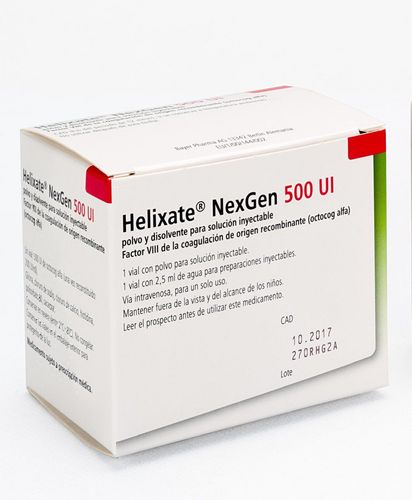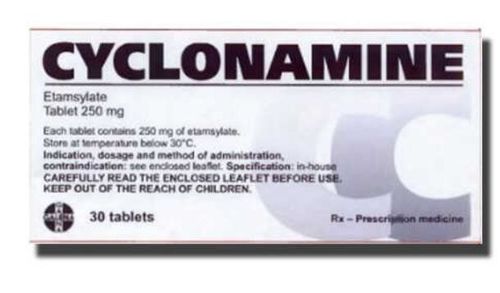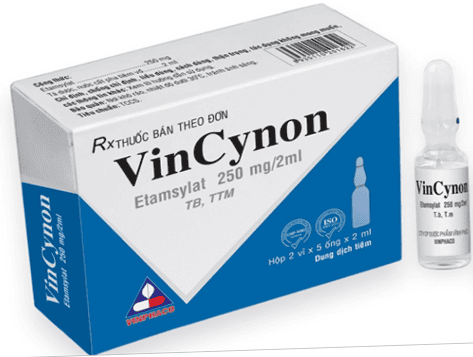This is an automatically translated article.
Hemophilia A is a blood clotting disorder caused by a lack of factor VIII - one of the body's clotting factors. Therefore, these patients need to be replaced with factor VIII from outside with the drug product Koate Vial. So what is Koate Vial?
1. What is Koate Vial?
What is Koate Vial drug? Koate Vial is used to control and stop bleeding episodes in people with low levels of factor VIII (hemophilia A). Koate Vial is also used in patients before surgery to prevent the risk of bleeding.
People with low factor VIII levels have an increased risk of bleeding after injury/surgery or are more prone to internal bleeding (especially bleeding into joints and muscles). Koate Vial contains clotting factor VIII (a protein), which is used to temporarily replace missing factor VIII so that the blood can clot and stop bleeding.
2. Instructions for using Koate Vial
Koate Vial is given by slow intravenous injection, usually lasting 5 - 10 minutes or as directed by your doctor. Koate Vial may need to be introduced more slowly, for a longer period of time than mentioned above, depending on the patient's dose and how the patient responds to the medication.
After the first injection of Koate Vial to treat hemophilia, some patients are able to self-administer the medication at home. If the doctor instructs the patient to use Koate Vial at home, the patient should read the product information available from the pharmacist before starting to use the drug. Learn all the instructions for preparing and administering the medication contained in the Koate Vial product pack.
If Koate Vial and the solution for reconstitution are stored in the refrigerator, let both come to room temperature before combining. After adding the solution for injection to the powder, the user needs to shake the vial for 10-15 seconds, then gently swirl the vial to dissolve the powder completely. If anything is unclear, ask your pharmacist about the best way to mix Koate Vial.
Before using Koate Vial, visually check the injection solution for particles or discoloration, if there is a patient who does not use this injection.
The dose of Koate Vial is prescribed based on the patient's health condition, weight, blood test results and response to treatment. Follow your doctor's instructions closely, and safely store and dispose of needles and medical supplies.
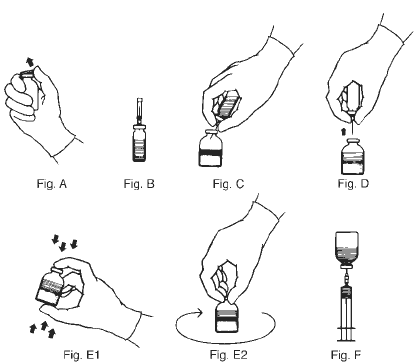
Cách sử dụng thuốc Koate Vial
3. Side effects of Koate Vial
Sometimes the patient may experience flushing, nausea, vomiting, heart palpitations, users can alleviate these conditions by injecting Koate Vial more slowly. Patients may also experience burning, redness, irritation at the injection site, fever, chills, and headache. If any of these Koate Vial side effects persist or get worse, tell your doctor or pharmacist right away.
The doctor prescribed Koate Vial after assessing that the benefit to the patient outweighs the risk of side effects, so there are many people who use the drug without experiencing any serious side effects. Tell your doctor right away if you have any of the following unlikely but serious side effects of Koate Vial:
Signs of anemia (fatigue, low energy, pale skin, trouble breathing) ); Bleeding/bruising that has just occurred or is getting worse. Koate Vial is extracted from human blood, so there is a very small chance that a patient may develop an infection from this medicine (including viral infections such as hepatitis ). Despite the careful testing of blood donors, the manufacturing process of the drug is extremely special and many tests are used to reduce this risk.
Patients should discuss the benefits and risks of Koate Vial treatment with their treating physician. Tell your doctor right away if a patient develops any signs of hepatitis or other infection, including fever, persistent sore throat, unusual tiredness, drowsiness, joint pain, nausea/ persistent vomiting, stomach pain, abdominal pain, yellow eyes/skin, dark urine.
A very serious allergic reaction to Koate Vial is very rare with symptoms including: rash, itching/swelling, severe dizziness, trouble breathing, chest tightness.
4. Notes when using Koate Vial
Before using Koate Vial, tell your doctor or pharmacist if the patient is allergic to any products with anticoagulant factor (factor VIII) or natural rubber/latex (found in this product). packaging of some brands) or any other allergies.
The manufacturer advises patients to monitor their heart rate during treatment, if the heart starts to beat fast, the patient should be prescribed a slower injection of Koate Vial or temporarily stop the infusion until the rhythm is reached. heart returns to normal.
During pregnancy and lactation, Koate Vial should only be used when clearly needed after discussing the risks and benefits with the treating physician.

Phụ nữ mang thai nên thận trọng khi dùng Koate Vial
5. Interactions of Koate Vial
Factor VIII level testing should be done regularly to determine the dose of Koate Vial and to check that the medication is working properly. If you miss a dose of Koate Vial, contact your doctor to set up a new dosing schedule.
Store Koate Vial pills according to the manufacturer's instructions. This medicine only works well for a few months if stored at room temperature, do not freeze this product or store it in the bathroom, protect it from light. After reconstitution, do not keep the injection solution in the refrigerator. Use the medicine within 3 hours, keep it out of reach of children and pets.
Please dial HOTLINE for more information or register for an appointment HERE. Download MyVinmec app to make appointments faster and to manage your bookings easily.
Reference source: webmd.com




